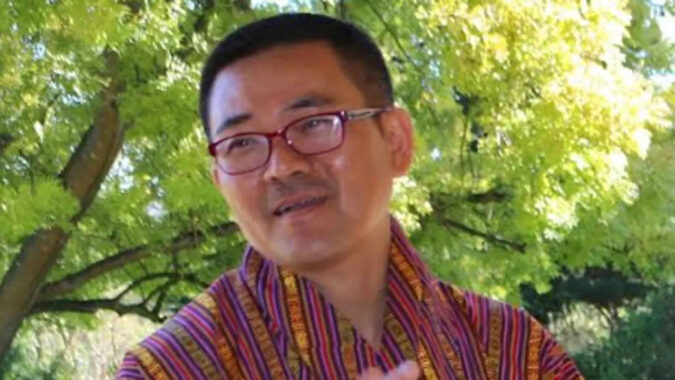Touching upon the expansion of aviation infrastructure on the sidelines of the recently concluded Bhutan Echoes: Drukyul’s Literature Festival 2023, Dorji Shardul, director-general of the department of tourism, revealed plans for a new international airport at Gelephu, close to the Indian border at Sarphang district. “It will happen. The existing domestic airport at Gelephu is being upgraded,” said Dhardul without giving a specific timeline. There are three domestic airports in Bhutan, Bumthang, Gelephu and Yongphulla, with one international airport in Paro which has a dangerous approach between peaks – where only a few certified pilots are allowed to make a landing.
“We are also planning to increase the number of places which offer direct flights to Bhutan. We are exploring Mumbai and Dubai, apart from connecting with cities in Korea and Japan,” said Dhardul, pointing out how connectivity bottlenecks are a huge challenge for Bhutan, especially as the country looks ahead to bolster trade and tourism after the pandemic. The Himalayan kingdom reopened to foreign tourists on September 23 after being shut to outsiders for more than two years. The reopening also did not induce much happiness among tourists, as the daily SDF (Sustainable Development Fee) was raised three times more than the usual charge of $65 for international visitors to $200 every day. Although Indian tourists are not clubbed under the category of “international” tourists in Bhutan, since September even visitors from India are required to pay an SDF of Rs1,200 rupees per night.
The new entry rules are in adherence with the philosophy of “High Value, Low Impact” tourism which the landlocked country has championed since 1974 when it first permitted foreign visitors. Attracting “high value” visitors is meant to ensure its fragile Himalayan ecosystem is not disrupted by a highly commercialised tourist economy, even though the country is majorly dependent on revenue from tourists.
“Pre-pandemic, our unique tourism policy was already getting diluted with several visitors. The raised fees are meant to correct that. If we make our tourism accessible to all, we will lose our value,” said Dhardul even as he draws up plans to attract visitors from other countries, aware of the delicate balance required to deal with competing goals of crowd control and revenue growth. “The one thing working for Bhutan is that it is not crowded. In fact, it is almost like wilderness beyond the capital Thimphu and Paro. But we will not have a future if we give in now,” said Dhardul who also unveiled a major new hiking route at Bhutan Echoes. Called the Trans-Bhutan Trail, it has been in development since 2019 and will let visitors cover a scenic span of 403km from Haa in the west to Trashigang in the east. Being dubbed as one of the “world’s greatest walks and one of the best hiking routes in Asia,” it won’t come cheap for visitors who might want to stay longer to cover the entire stretch.
Interestingly, the country is also pivoting away from its famed association with Gross National Happiness which places a greater premium on collective well-being and happiness. At the Bhutan Echoes this time, the tourism minister unveiled a new brand logo called Bhutan, Believe. ” We are moving away from ‘Happiness is a place’ in favour of an open-ended and flexible tagline fit for a period of transformation and (be more) versatile when communicating with a variety of audiences,” read a slide from a presentation on the meaning and message behind the new tourism logo at the literature festival. “Believe builds on the ideas and values of GNH but evolves behind it,” the presentation further explained.
The new SDF charges have not pleased tour operators in both India and Bhutan, but the minister emphasizes that it is still the lowest for Indians. “For Bhutan, it’s India and the rest of the world. Even Maldives and Bangladesh are in the category of international countries,” said Dhardul who believes short-terms losses in tourist numbers is a price his country is ready to pay to ensure natural resources are preserved.
Reportedly, in addition to upgrading its airport, there are plans to connect Assam’s Kokrajhar to Gelephu town via a railway link.
